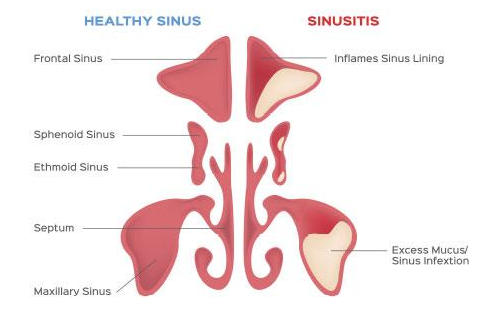Do I Have a Food Allergy?
If you have a food allergy, your immune system overreacts to a specific protein found in that food. Many food allergies are diagnosed in young children, though they may also appear in older children and adults. Many people with environmental allergies also have food allergies. Food allergy reactions can be life-threatening, and can come on suddenly, usually within minutes to a couple of hours after eating the trigger food. Symptoms of a food allergy can include:
- Hives or red, itchy skin
- Stuffy or itchy nose, sneezing or itchy, teary eyes
- Vomiting, stomach cramps or diarrhea
- Angioedema or swelling
In some cases, food allergy can cause a severe allergic reaction known as anaphylaxis. Signs include:
- Hoarseness, throat tightness or a lump in the throat
- Wheezing, chest tightness or trouble breathing
- Tingling in the hands, feet, lips or scalp
Many people who think they are allergic to a food may be intolerant to it. Some of the symptoms of food intolerance and food allergy are similar, but the differences between the two are very important.
Testing
You may get food allergy tested using Skin Prick Testing (SPT) along with a physical examination and thorough history to determine which foods in your diet, if any, are triggering your symptoms. Skin prick testing is performed on the arms or back by applying concentrated food allergens to the outermost layer of the skin using a testing device and is virtually painless.
Food Allergens Tested
You will be tested for the top 8 most common allergenic foods, accounting for 90% of allergic reactions. These foods include:
- Whole egg
- Cow’s milk
- Peanut
- Mixed fish (flounder, cod, halibut)
- Mixed shellfish (crab, shrimp, lobster, oyster)
- Almond
- Wheat
- Soybean
You should not undergo testing if:
- You are pregnant
- You have a skin condition called dermatographism
- You have unstable asthma
- Your asthma is worsening, or you have been hospitalized for asthma in the past year
- You are taking a beta blocker for high blood pressure.
Food Allergy Treatment
- There is no cure for food allergies. Strict avoidance of food allergens and early recognition and management of allergic reactions to food are important measures to prevent serious health consequences.
- If you have a food allergy, it is recommended that you carry and epi pen at all times.
How Many People Have Food Allergies?
- Researchers estimate that up to 15 million Americans have food allergies.
- This potentially deadly disease affects 1 in every 13 children (under 18 years of age) in the U.S. That’s roughly two in every classroom.
- The economic cost of children’s food allergies is nearly $25 billion per year.
Food Allergy Risk Factors and Related Diseases
- Food allergies affect children and adults of all races and ethnicity.
- A food allergy can begin at any age.
- Your risk of having food allergies is higher if you have a parent who suffers from any type of allergic disease (asthma, eczema, food allergies, or environmental allergies such as hay fever).
- Children with food allergies are 2-4 times more likely to have other related conditions, such as asthma and other allergies, compared with children who do not have food allergies.
- Food allergies may be a trigger for other allergic conditions, such as atopic dermatitis and eosinophilic gastrointestinal diseases.
Can You Outgrow a Food Allergy?
- Peanut and tree nut allergies, which also tend to develop in childhood, usually are lifelong. In the U.S., approximately three million people report allergies to peanuts and tree nuts. Studies show the number of children living with peanut allergy appears to have tripled between 1997 and 2008.
- Cow’s milk, egg and soy allergies typically begin in childhood and eventually may be outgrown. In the past, most children outgrew these allergies by school age. A recent study, conducted by researchers at Johns Hopkins University School of Medicine, indicated that children are taking longer to outgrow milk and egg allergies. Fortunately, the majority are allergy-free by age 16.
- Fish and shellfish allergies also tend to be lifelong. More than 6.5 million adults are allergic to finned fish and shellfish.
Is There a Cure?
- There is no cure for food allergies. Strict avoidance of food allergens and early recognition and management of allergic reactions to food are important measures to prevent serious health consequences.




Comments
Post a Comment